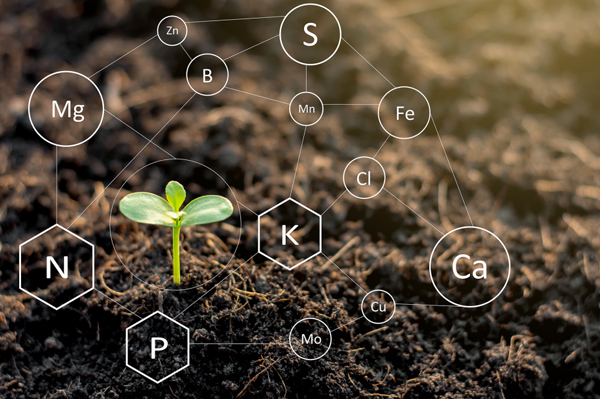
Mineral Absorption
Mineral Uptake
The vast majority of horticultural crops are grown on substrates, which allows for precise control of growing conditions. However, it is surprising how little this potential is fully utilized in horticulture. Instead, we systematically overfeed water and fertilizers. No one really knows the exact effect of this practice, but there are indications. For example, nitrogen primarily stimulates leaf and stem growth. A reduced supply might be better for flower formation and fruit setting. However, achieving this requires measuring the plant’s needs and nutrient levels in the solution on a daily basis—something we currently don’t have enough insight into. Gradually, methods are being developed to better match the mineral supply with the plant’s needs.
Passive and Active Mineral Uptake
Water uptake and the absorption of nutrients (also called elements, minerals, or nutrients) are strongly interconnected. When roots absorb a lot of water, they also absorb a significant amount of minerals. The white root tips are particularly important for absorption. Plants generally have two ways to take up minerals through their roots: passively with the absorbed water, and actively through a pump mechanism. The latter requires energy and is temperature-dependent. Lower temperatures lead to slower uptake. Some minerals, such as calcium, are almost exclusively absorbed passively. This means that if the water supply is insufficient, calcium issues can quickly arise. Additionally, calcium, unlike other minerals, is only absorbed by the root tip and a small section above it, so young and healthy roots are necessary.
Competition in Mineral Uptake
Minerals are dissolved in the nutrient solution or soil moisture as ions, which can be either positively or negatively charged. For example, potassium is present as K+ in the solution, and nitrate nitrogen as NO3-. Across the cell membrane, there is a charge difference, which causes positive ions to be pulled inward more easily. Negative ions are harder to absorb and must be transported against the charge difference, which requires more energy.
Moreover, there is competition between minerals for absorption. For example, the balance between calcium, potassium, magnesium, and ammonium in the nutrient solution or soil is important. AG STIM ensures a balanced soil life and stable mineral uptake. It also helps convert organic pollutants into inorganic pollutants, keeping drip lines clean. As a result, oxygen is delivered in high concentrations to the roots. For optimal plant vitality, AG STIM is essential for every grower. Combining traditional fertilizers with AG STIM BIOSTIMULANT is the best combination for a healthy and vital crop.




